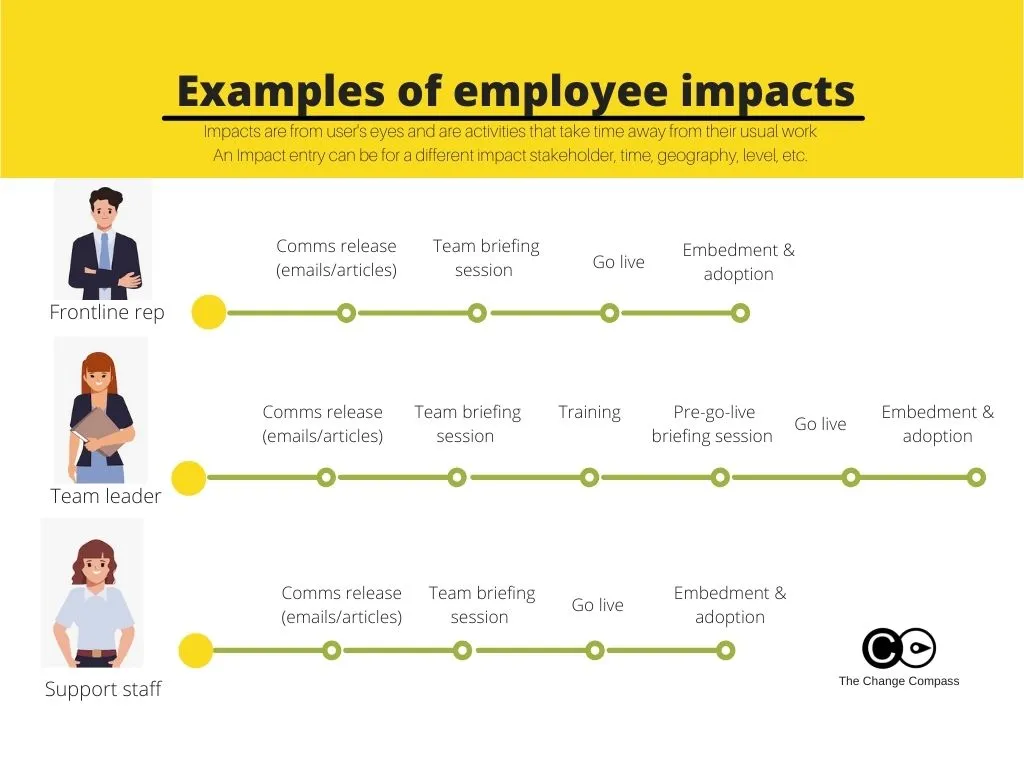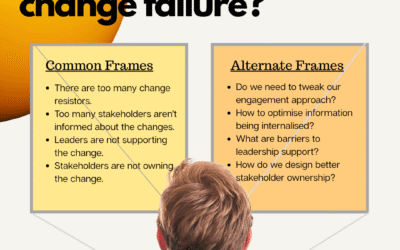Change practitioners usually classify different change impacts into people, process, technology and customer. Then, there is a great effort and focus placed on describing exactly what the change is from a project or program perspective. These can include the processes changes, and how different the new process is going to be compared to the current process.
However, adopting a user-centric view of change impact is critical.
Often what is seen as impact can be very very different from what is experienced by the end-user. Let’s take a few examples.
When a project is ‘rolled out’. There are can be a lot of different impacted audience factors to consider. These can include:
- Location
- Role
- Gender
- Digital fluency
- Age
- Length of service
- Team size
- Availability of support staff
- Availability of effective 2-way communication platforms
- Effective learning and development processes in place
- Functional skill sets
So depending on how these factors determine the impact of the change on groups of individuals, identified specific impacts can be different. In the change impact assessment process, these should be carefully teased out and identified explicitly. Even how we express the names of the impacts should consider how the changes are perceived.
For example, is an impact ‘Team Leader briefing team members about the new process’ or ‘Weekly team meeting to discuss new process changes’? The initial wording is more focused on the new process, whereas the latter one illustrates that there can be various changes discussed in the meeting. So as a result, practitioners need to be open to the environment in which their messages will be delivered and through this better position and clarify the meaning of the change from the team’s perspective. E.g. can this change be delivered as a bundle with other process changes?
To download an example of a simple version of different change impacts on different roles click here.
In a recent example, a person is understood by the organisation to be undergoing 6 separate initiatives each with their various impacts. Each initiative has fleshed out the various project impacts and these are listed and planned explicitly. However, this is from the organisation’s perspective. In fact, what the individual is undergoing is quite different.
There are changes that the team or division is undergoing that are not always taken into consideration such as people or team changes. On top of this there are also seasonal workload impacts from the likes of end of financial year, audits or pre-holiday season workload. On top of this, there are also various Covid considerations to take into account – the mother of all changes at the moment. Lockdown and social distancing have profound impacts on individuals leading to physical and psychological health impacts.
To read more about this go to our article How to take into account mental health considerations in change delivery.






